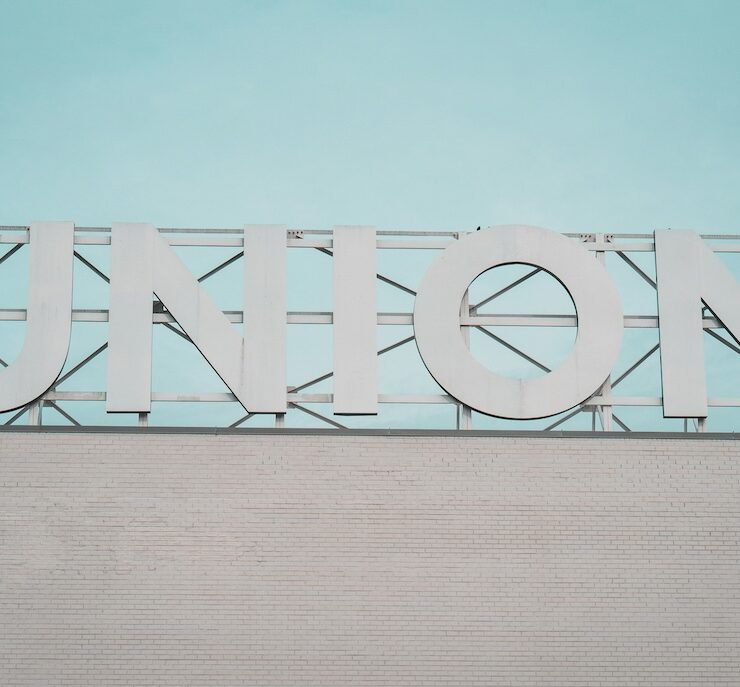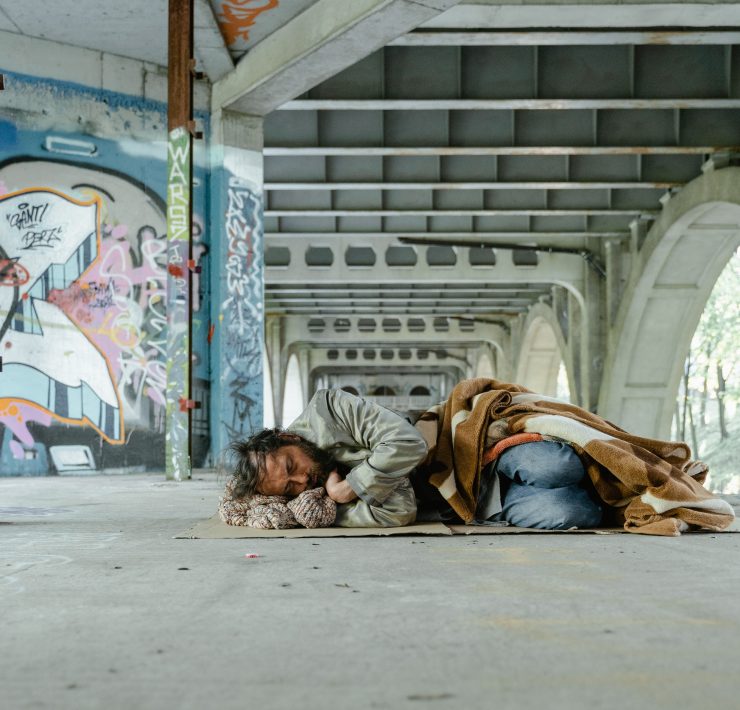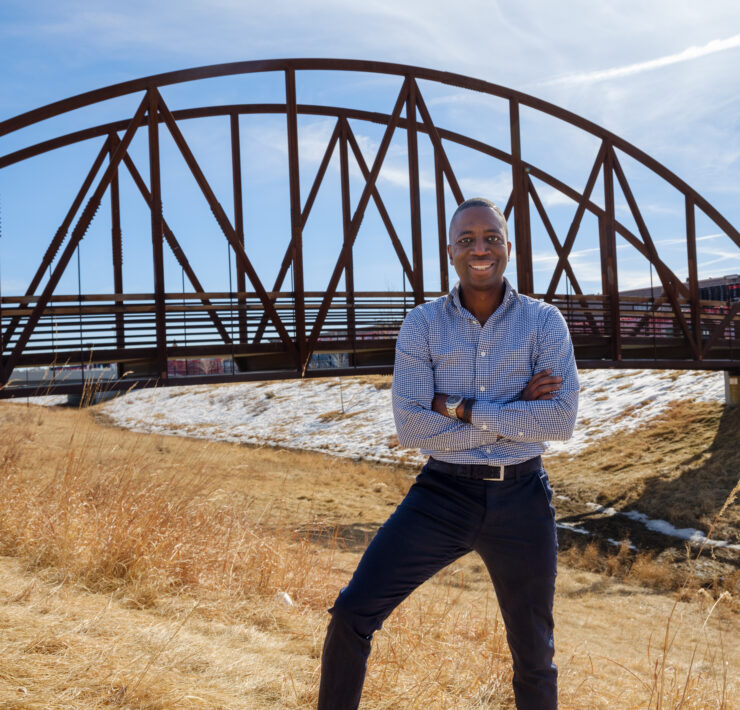The Impact of the Affordable Housing Crisis on Denver’s LGBTQ Homeless

While the real estate market continues to thrive in Colorado, the amount of affordable housing for working-class families and individuals dwindles. However, the effects of the affordable housing crisis may disproportionately impact LGBTQ people—especially queer youth. LGBTQ youth are already 120 percent more likely to experience homelessness than non-LGBTQ youth, according to a 2017 study by researchers from Chapin Hall at the University of Chicago.
In the Denver region, three organizations have addressed poverty and homelessness among this very vulnerable population for many years by specifically providing programs and services to either youth or transgender individuals.
The Gathering Place is a daytime drop-in center that serves women, their children, and transgender individuals who are experiencing poverty. The Delores Project provides shelter and personalized services to unaccompanied women and transgender folks experiencing homelessness. Urban Peak is an organization that provides various services to youth ages 15 through 24 experiencing homelessness or at risk of becoming homeless.
LGBTQ Homelessness
Urban Peak CEO Christina Carlson said that the three major predictors for youth that may experience homelessness are family instability, involvement with the juvenile justice system or child welfare, and self-identifying as LGBTQ. Researchers from the Williams Institute, in collaboration with the True Colors Fund, estimated that roughly 7 percent of youth in the U.S. are LGBTQ, but 40 percent of youth experiencing homelessness are LGBTQ.
The most common reason for LGBTQ youth to experience homelessness is running away from home after being rejected due to their sexual orientations or gender identities.
Carlson added that youth experiencing homelessness are already a vulnerable population to risk factors such as sex trafficking and mental health issues, but these risks are exacerbated for LGBTQ youth. A 2011 study found that LGBTQ youth between the ages of 10 and 25 experiencing homelessness are 70 percent more likely to engage in survival sex.
“Sex trafficking happens within the first 72 hours,” Carlson said. “There is a vulnerability for youth, and when you add on LGBTQ, particularly if they haven’t been accepted by their families or have been told in their lives that who they were isn’t OK, it opens up another level of vulnerability.”
Transgender youth experiencing homelessness are the most vulnerable of LGBTQ subpopulations. At the Gathering Place, 2 percent of members identify as transgender and gender non-conforming individuals. They also visit the daytime drop-in center almost twice as often as cis women, according to President and CEO Leslie Foster.
Similarly, 2 percent of clients at Urban Peak identify as transgender but, based on a 2016 survey by the Williams Institute, only 0.6 percent of U.S. adults identify as transgender.
For transgender people experiencing homelessness, a number of issues can occur when looking for safe shelter, including humiliation and physical or sexual victimization at shelters where they are often forced to stay in quarters and use restroom facilities based on birth sex.
For elder, transgender individuals experiencing homelessness in the Denver region, the Delores Project is the only shelter that is outwardly welcoming and celebratory of transgender people and trans identity.
“We hear a lot from [the transgender community] that we are the only safe shelter for them,” said Gaelen Hafen, shelter manager. “So, when we do not have space, that’s really difficult as there are not a lot of shelter spaces for those folks to go to.”
Affordable Housing Crisis in Colorado
The economic process known as the “boom and bust cycle” succinctly describes the development trajectory of the Denver metropolitan area. In recent years, the Denver region has experienced an economic boom thanks to a population growth rate of 13.55 percent from 2010 to 2017, according to estimates by the U.S. Census Bureau.
According to researchers at Shift Research Lab and the Colorado Futures Center, despite the economic boom in the Denver region, there is a growing gap between jobs with wages that can afford housing that costs under $250,000 and housing inventory. For example, in 2014, 57 percent of workers could only afford housing that costs under $250,000, but housing under $250,000 represented 47 percent of the total housing inventory.
As a result of growing housing prices, renters have also experienced an upward trend in rent prices. The average rent in the Denver Metropolitan area for a one-bedroom apartment increased from $800 per month in the first quarter of 2011 to $1,234 per month in first quarter of 2017, according to the “Denver Metro Apartment Vacancy & Rent 4th Quarter 2017 Report” published by the Apartment Association Metro Denver.
According to the directors of all three organizations, the affordable housing crisis has made it more challenging for clients to find safe and stable housing. Interim Executive Director of the Delores Project Laura Rossbert said although many of their clients have a full-time job, they are not able to afford rent prices in the Denver region.
To address the lack of affordable housing, the Delores Project partnered with Rocky Mountain Communities (RMC), an affordable housing developer, on a project called the Arroyo Village. Rossbert said that the Arroyo Village will include a new shelter facility, 35 units of low-income, permanent, supportive housing and 95 units of affordable housing for working class families and individuals, all in a city block.
“The Delores Project and RMC own a whole city block where RMC previously had 27 apartment units, and we had the shelter,” Rossbert added. “So, the executive directors of both organizations decided to explore what it would look like to utilize our space in a better way.”
One of the services offered at Urban Peak also involves providing supportive housing to youth who are ready for stable and independent housing at one of the 68 units operated by the organization in three different apartment buildings.
“Urban Peak also has a fair amount of community housing,” Carlson said. “So, typically we have somewhere between 100 and 115 [youth] that we are providing supportive services, if not the housing itself.”
Holistic Approach to Homelessness
The programs and services offered at all three organization may address different needs of vulnerable populations experiencing poverty or homelessness, but they all share a similar goal of helping clients reach their own potential by offering a wide array of services.
The Gathering Place is a daytime, drop-in center that allows members experiencing homelessness or poverty to have a safe place to be during the day so they can use that time productively instead of losing time to street survival, Foster said. In addition, the Gathering Place strives to treat members with a trauma-informed approach and fosters choice whenever possible as one of the key approaches.
“We believe that everyone that comes to the Gathering Place has experienced some kind of trauma, so chief among those philosophical approaches is choice,” Foster said. “If you are here at the Gathering Place, you may choose to do nothing and sit on a chair, or you may choose to participate in every, single program we have.”
Unaccompanied women and transgender individuals experiencing homelessness may seek emergency shelter at the 50-bed shelter of the Delores Project for up to a week. Additionally, the Delores Project has three extended stay programs in collaboration with partner organizations for individuals receiving case management.
“We believe in bringing a non-judgemental approach to service delivery, so individuals can name what they need, and we can connect them to those resources,” Rossbert said. “We can’t tell people what they need; we provide access to those resources so they can move forward in their own path.”
In addition to supportive housing, Urban Peak also organizes street outreach five days per week to meet the basic needs of homeless youth by providing food, hygiene materials, and weather-appropriate clothing, as well as providing basic services at a daytime drop-in center, operating a 40-bed shelter, offering case management to help youth access supportive services, and running a thrift store.
“We have this continuum of services, but if you focus back on what it’s all about, it’s about self-sufficiency and stabilization,” Carlson said.
According to Carlson, without Urban Peak services, it is likely that 30 percent of the youth served would become chronically homeless, which would cost the city of Denver almost $40,000 per year per person as a result.
“We are doing really important work for that one person who comes to us, but we are also transforming what this community looks like today and tomorrow,” Carlson said.
Investing in Solutions
Carlson knows that every solution should ultimately aim to break the cycle of poverty while also acknowledging other issues that affect marginalized groups such as systematic racism, homophobia, and transphobia.
“Getting someone into affordable housing is great, but is that the end?” Carlson said. “In the work that we do, we need to talk about education, employment, relationship-building, mental health services, so you can really break that cycle.”
Based on a set of guidelines called the “National Recommended Best Practices for Serving LGBT Homeless Youth,” the future prospects for LGBTQ youth experiencing homelessness depend on implementing research-based practices at shelters serving this population such as identifying LGBTQ individuals to assess their mental health, substance use, and HIV risks.
The Center for American Progress recommends that government agencies recognize the special needs of LGBTQ youth.
There’s one thing that these three Denver-based organizations agree on: creating more affordable housing and jobs with wages that support the needs of every individual is one of the many solutions.
“I sometimes think that we humans make things complex that are not complex, and what people need is housing that they can afford with services that meet their needs,” Hafen said.
What's Your Reaction?
Ruben is a freelance journalist currently based in Denver. He is passionate about social justice, climate change advocacy, and technological advancements. Find Ruben on Twitter @r_gallardo21 and Instagram @guccigallardo










